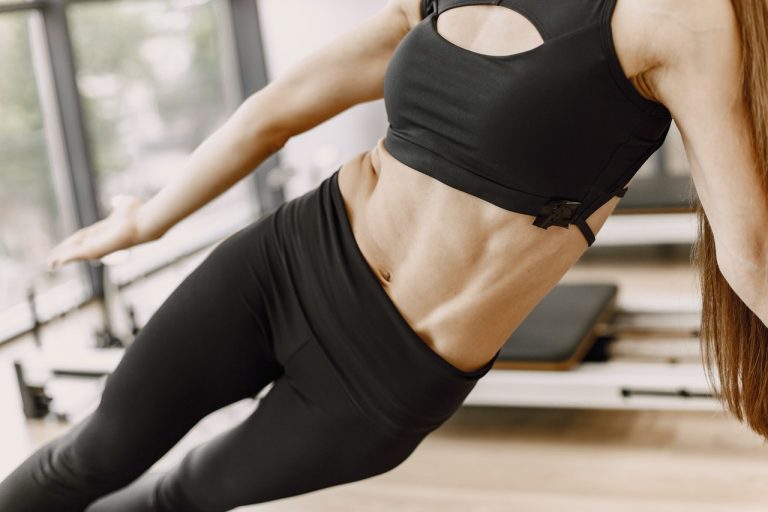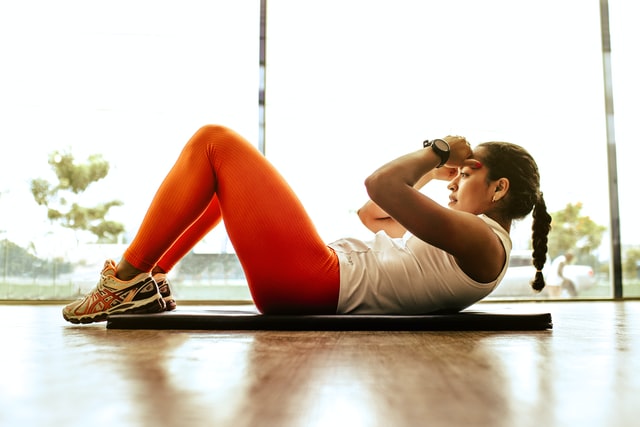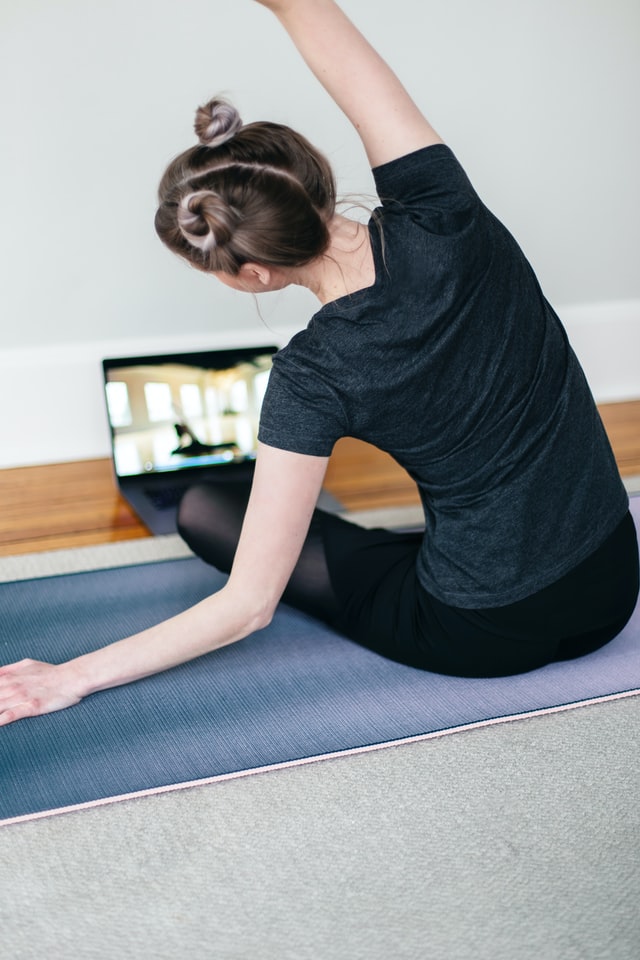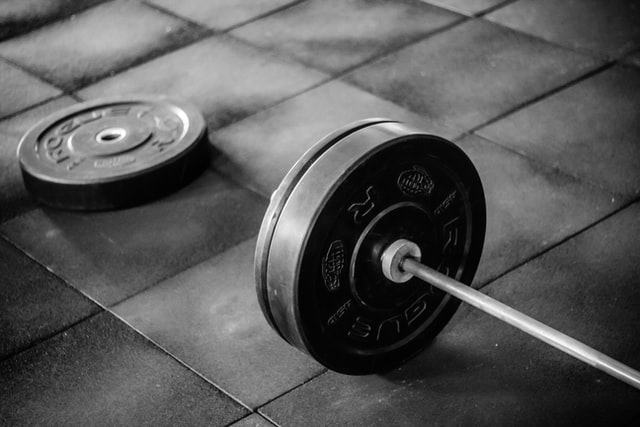I’m talking about abs. You know, I mean the stomach muscles that make you look like a superhero when they’re done up in spandex because “they show off your six-pack.”
But I don’t want to talk about them; I want to tell you how to get them too!
Before we dive into this article, let me say that it’s not an easy task. It takes time and dedication—not just for one workout per week, but for a whole hour per day.
But if you’re willing to put in the effort, these five natural exercises will help get your abs looking like a superhero’s.
What the hell is a Six-Pack?
Abs that are defined and toned — generally referred to as a six-pack — are a frequently sought-after target in the gym. However, not all ripped abs are the same. Specific individuals may have a four-pack, while others may have an eight-pack.
The Rectus Abdominis is a muscle group that is in charge of how your abs look.
The rectus abdominis, once toned, forms your four-, six-, or eight-pack. It is made up of two parallel muscle bands that run along both sides of the abdomen.
The linea alba is a fibrous band that divides the rectus abdominis into two halves. It is responsible for the line that runs down the center of the abdomen.
Additionally, the rectus abdominis enables you to:
- have a proper breathing technique
- maintain proper posture
- safeguard your internal organs
The rectus abdominis muscle is crossed horizontally by bands of connective tissue (fascia). On either side of your belly, these bands provide the illusion of several packs stacked on top of one another.
Each individual is born with a certain amount of such connective tissue bands. You cannot develop additional ones. Additionally, your genetics dictate their symmetry, length, and size.
An eight-pack contains four bands. A six-pack contains three bands. An individual who has a four-pack includes two bands.
How long does it take to get a six-pack?
The average time it takes to get a six-pack is between 3 and 6 months, but you can still expect results in as little as four weeks with the proper routine.
It takes time to achieve visible abs, but it is possible. It can take anywhere from six months to one year of consistent workouts to see the results you want.
Just because a person has low body fat levels doesn’t mean they will get to see their abs in just one month. The amount of time it takes varies on the individual, and the macro calculator can help people find out how much food is needed each day so that there is a balance between macronutrients and calories.
The American Council on Exercise (ACE) recommends reducing your body fat to between 14% and 20% for women and 6% to 13% for men to achieve the desired look of your abs.
There are a few things that can help you achieve your goals. One of these is to set up an effective plan for yourself. An excellent way to start is by breaking bad habits and creating new, healthier ones.
To achieve a six-pack, you must have realistic goals and small milestones. It’s also important to keep track of your food and beverage consumption for the plan to be achievable.
How to reduce body fat percentage
No matter how well developed your core muscles are, they’ll never pop if they’re covered by too much fat.
Ab exercises are not practical enough to significantly reduce body fat percentage. You can get a six-pack by dieting, weightlifting, and cardio. It would be best if you had a leaner physique because the muscle creates an intercostal space necessary for your abs to pop out.
You can reduce your body fat percentage by doing specific ab exercises. However, it would be best if you did not focus on spot reduction and instead work out the entire abdominal area to get rid of belly fat and other types of midsection fat.
It’s important to note that the body fat percentage needed for abs varies per person, depending on their body type. For example, some people will need to cut further while others may see themselves at a higher percentage.
Best exercises to get abs
It takes time and dedication, but you can do it naturally with these workouts!
1. Cable Crunch
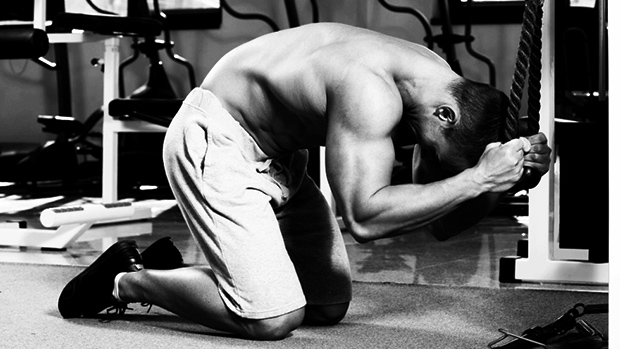
Cable crunches sometimes referred to as kneeling cable crunches, are a type of weighted crunch that targets your abdominal muscles.
Kneel in front of a cable station equipped with a pulley attachment and do cable crunch movements. Grasp the rope attachment and pull it down with both hands until it sits just over your head.
Squeeze your core muscles and move your shoulders toward your pelvis while maintaining your hips and arms steady. Decrease your upper body weight until your elbows are virtually in contact with your knees. Rep this movement as desired.
2. Weighted Sit-up
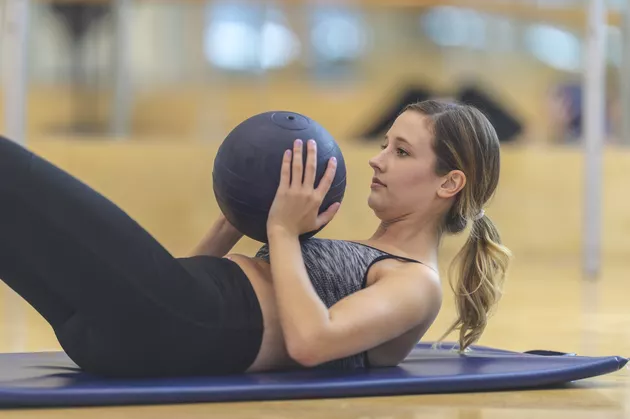
Situps are a basic yet powerful workout that requires no extra equipment for tightening and developing your core muscles. While a standard situp might help tone your abdomen, a weighted situp may provide more significant and faster benefits.
You can execute a weighted situp in the same way as you would a regular situp. The difference is that you’ll be holding a weighted plate or dumbbell in your hand for this exercise.
Situps with weights engage the same muscle regions as situps without weights. Nonetheless, the increased resistance provided by the weight boosts the workout’s intensity, resulting in stronger muscles.
3. Captain’s Chair Leg Raise
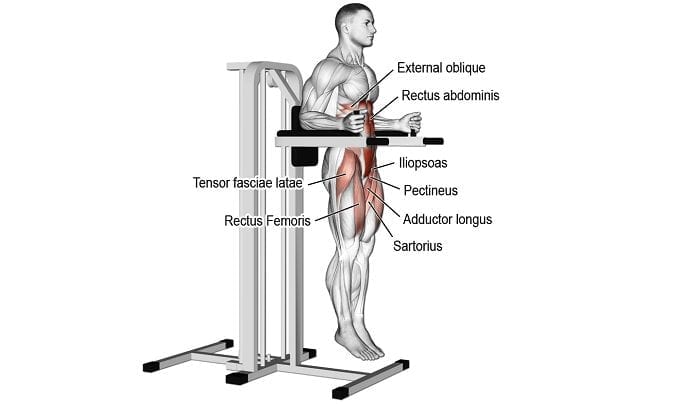
Hanging leg raises using a captain’s chair are excellent for strengthening the abdomen and hip flexors. They involve the use of a frame like a chair. This exercise can supplement a strength-training regimen by exercising many muscles simultaneously if you have access to this equipment.
Place your forearms on the cushioned armrests of the captain’s chair frame. If present, grip the handles. Confirm that your arm posture is secure (stable arms allow you to lift your legs with proper posture). Straighten your back.
Step 1: Take a deep breath and contract your abdominal muscles in preparation for the leg lift.
Step 2: Slightly bend your knees and elevate your quads until they’re parallel with the ground.
Step 3: Return to the beginning position by lowering your legs in a controlled manner, exhaling as you go. Maintain focus on your core.
4. Air bicycle
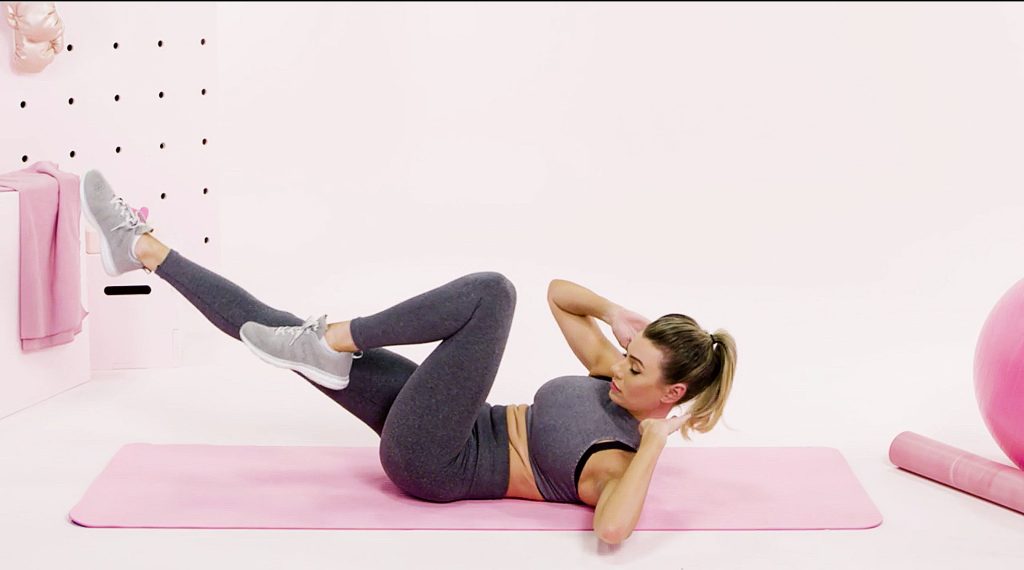
Air bicycle is a total-body and calisthenics workout that predominantly targets the abs and the hip flexors and obliques to a lesser extent.
Step 1: Lay with your back on a training mat, pressing against the mat with your lower back. Gently brace your hands against the back of your head to stabilize your neck.
Step 2: Raise your upper body off the mat, maintaining your knees parallel to the floor and your legs parallel to the ground.
Step 3: Straighten your right leg out without allowing it to hit the floor. Maintain a bent left knee and a parallel left leg. Crunch upwards and sideways using your abdominals, stretching your right forearm to your left knee.
Step 4: Using alternate elbows and knees, extend your left leg while drawing your right knee into your body (as if riding a bicycle), then crunch sideways so that your left elbow extends near your right knee.
Step 5: Repeat, alternating between knees and elbows.
5. Ab wheel rollout
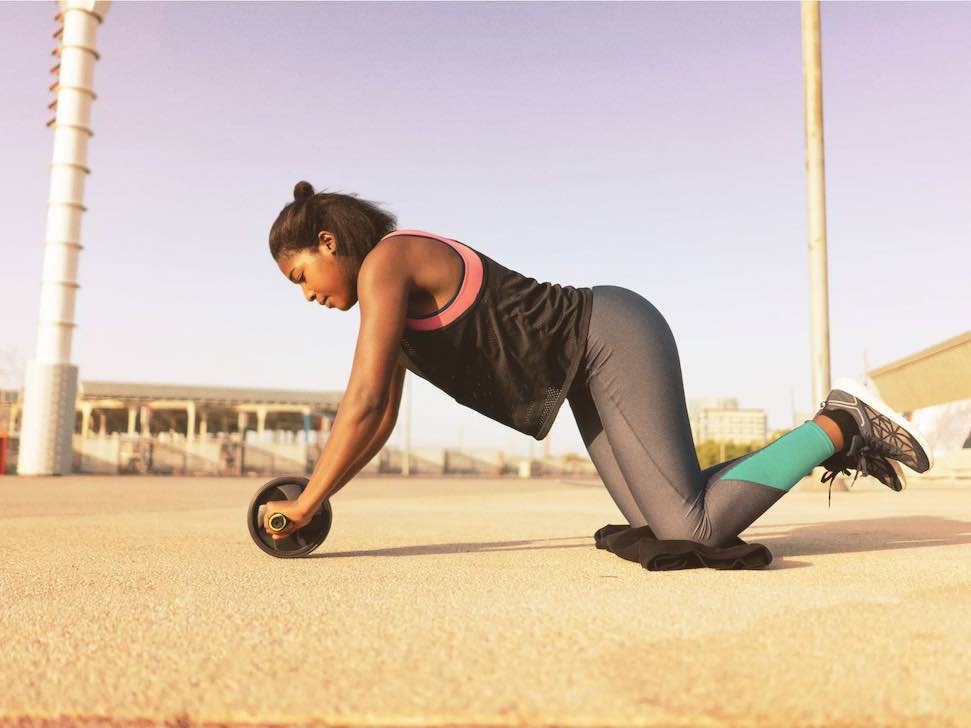
The ab wheel rollout is perhaps one of the all-time great core workouts. As easy as this exercise appears, you must perform it properly for it to be effective.
However, the ab wheel rollout is not simple to perform—at least not accurately. Take your time developing a good sequence for the rollout; this will preserve your back in the long term while also strengthening your core.
People’s primary error when performing ab wheel rollouts is an excessive concentration on going out as far as possible when they initially begin. That, though, is a recipe for lumbar discomfort. Before doing the entire ab wheel rollout, you must develop a sense of your abs resisting lower back extension; otherwise, you will exert unnecessary stress on your spine.
So how do you use an ab roller properly?
To protect your knees, you’ll want to kneel on a yoga mat or pad.
Once on the ground, your primary objective will be to maintain a strong stance while rolling out, resisting forces that would cause your lower back to hyperextend and your hips to slump forward. Contract your abs strongly and energetically, even if you do not feel as though you need to. Rolling out is not difficult. Rolling out while maintaining control of your lower back posture is difficult.
This time, repeat the movement focusing on a gradual and controlled rollout, pressing your core to bring the wheel back towards you.
How to get ripped abs
Working out isn’t enough for ripped abs, so here is some additional advice:
Eat enough protein
High-protein dieting beats low-protein diets in every way. Protein helps to build lean muscle and burn body fat, which is why it’s essential to eat enough protein as part of a healthy lifestyle.
Eggs, chicken breast, and turkey are good sources of protein. Protein is vital for muscle recovery and healthy weight loss.
Post-workout carbs
It has been shown that carbohydrates are necessary for muscle recovery. They are also an important fuel source, so complex carbs should come from vegetables instead of other sources like sugar or breads.
Moderately eating carbs like vegetables is an excellent way to maintain the body’s natural metabolism.
Healthy fats
When trying to get ripped abs, it is essential to incorporate healthy fats into your diet.
Healthy fats will help regulate insulin levels and fight inflammation. Nuts, nut butter, fish oils, and olive oil are some of the best sources of healthy fats.
Conclusion
As you can see, having a visible six-pack isn’t easy, and it takes time and dedication to achieve. However, if you use tips in this article and put your mind to it – you can accomplish this goal in no time!
Subscribe to my newsletter below for more fitness and general tips!

